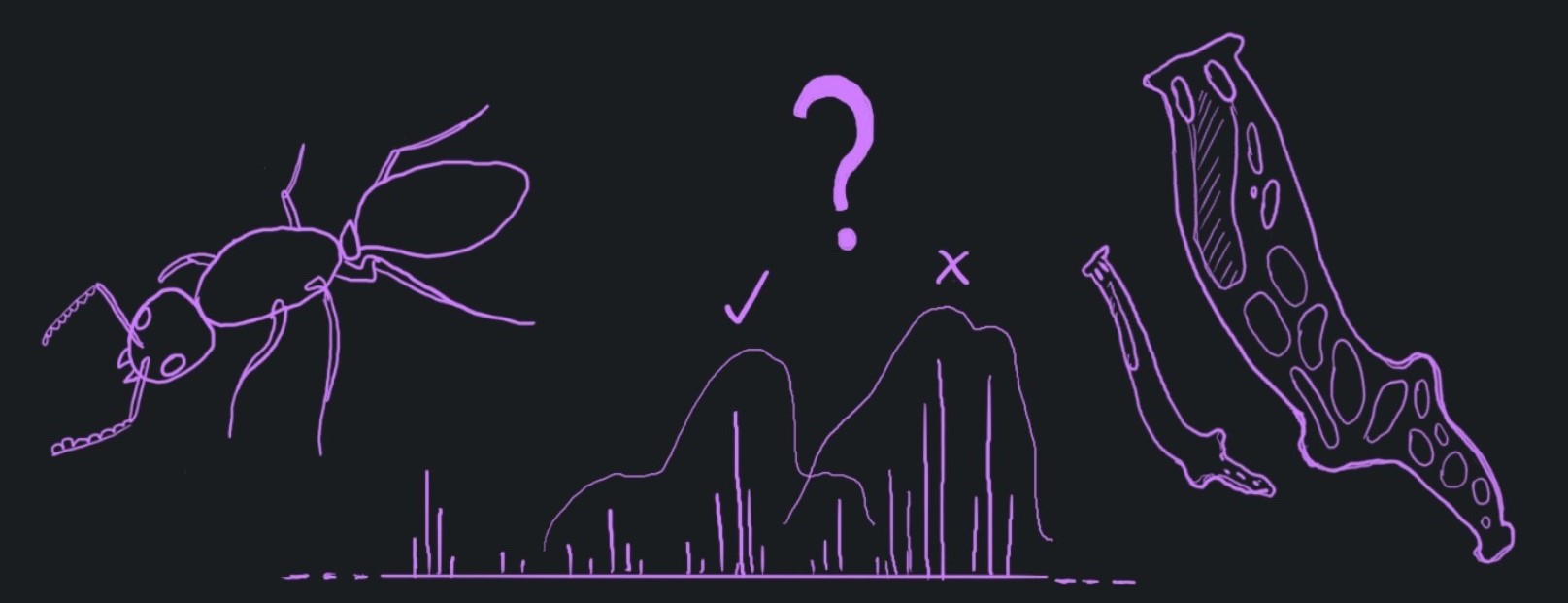About

My name is Brian (Anthony) Whyte - I come from Webster, NY and I now live in Oakland, CA. I am a biologist who studied social recognition in ants and trematodes for my PhD, and I am looking to continue my career in teaching and researching animal behavior. You can learn more about my research here, or check out my scientific publications, or my academic CV.. To do my science, I learned a lot of coding and statistics, and I’ve begun to share my methods on Github. I am also a pretty good nerd when it comes to drawing 🖍️, Pokemon 🐥, and music 🎧. I like to collect music and I sometimes post mixes online (NTS radio).
Research

The Major Evolutionary transitions in individuality
Life can be hierarchically organized into units of reproduction that function as “individuals”. In evolutionary theory, individuals are typically cells or multicellular bodies, but the boundaries or definitions of individuals are ambiguous. A working definition for biological individuals will likely always be circumstantial and debated, but biologists are not the only ones constructing boundaries around the organizations of living things. Cells, bodies, societies, and even species construct their own boundaries to their identities through recognition systems that filter what components are allowed to exist in these levels of organization. My dissertation broadly investigated social recognition in eusocial animals, specifically ants and trematodes. Below I summarize my work so far in each system, and the next topics I wish to research in each system:
🐜 ANTS: supercolonial identities and chemical ecology
I studied an invasive ant species infamous in California - the “Argentine ant” (Linepithema humile). Forming massive “supercolonies” across continents, their ecological success as introduced species is largely attributed to their signaling of their social identities through their shared colony odors, which allows them to organize as supercolonies. To better understand their chemical communication and recognition, I’ve done experiments showing how they respond to alarm pheromones under different contexts (1) and how their colony odors change across different microhabitats in California (2).
My next publication will address how their colony odors also influence their survival in dry habitats, and I hope to still one day provide models or simulations explaining how invasive supercolonies may collapse over time. In ants generally, I am interesting in how multiple levels of recognition occur in their societies (individual, caste, colony) and how recognition of these social categories changes with colony size and social complexity.
🐍 TREMATODES: colony recognition and parasite sociality
To expand my prowess in comparative biology, I also studied parasitic trematodes (i.e., flatworms) in California’s coastal marshes that exhibit a division of labor, where colonies of larvae are composed of two morphs: reproductives and soldiers. Given their recent discovery, yet similarities to eusocial species (like ants), I published a theoretical piece arguing that eusocial parasites are likely neglected because their life cycles prevent overlapping parent-offspring generations, which is considered a prerequisite for eusociality (3).
My next publication will show that these social trematodes (specifically, Himasthla rhigedana) are not only capable of colony recognition, but that this recognition is geographically correlated, such that they must be capable of recognizing a gradient of dissimilarities in the identities of their competitors. In the future, I hope to identify the possible chemical cues used in colony recognition, and find other parasitic species which form caste systems when living as colonies inside their hosts.
Contact
Please email me at: whyteBA at gmail dot com 👋📧
Elements
Text
This is bold and this is strong. This is italic and this is emphasized.
This is superscript text and this is subscript text.
This is underlined and this is code: for (;;) { ... }. Finally, this is a link.
Heading Level 2
Heading Level 3
Heading Level 4
Heading Level 5
Heading Level 6
Blockquote
Fringilla nisl. Donec accumsan interdum nisi, quis tincidunt felis sagittis eget tempus euismod. Vestibulum ante ipsum primis in faucibus vestibulum. Blandit adipiscing eu felis iaculis volutpat ac adipiscing accumsan faucibus. Vestibulum ante ipsum primis in faucibus lorem ipsum dolor sit amet nullam adipiscing eu felis.
Preformatted
i = 0;
while (!deck.isInOrder()) {
print 'Iteration ' + i;
deck.shuffle();
i++;
}
print 'It took ' + i + ' iterations to sort the deck.';
Lists
Unordered
- Dolor pulvinar etiam.
- Sagittis adipiscing.
- Felis enim feugiat.
Alternate
- Dolor pulvinar etiam.
- Sagittis adipiscing.
- Felis enim feugiat.
Ordered
- Dolor pulvinar etiam.
- Etiam vel felis viverra.
- Felis enim feugiat.
- Dolor pulvinar etiam.
- Etiam vel felis lorem.
- Felis enim et feugiat.
Icons
Actions
Table
Default
| Name |
Description |
Price |
| Item One |
Ante turpis integer aliquet porttitor. |
29.99 |
| Item Two |
Vis ac commodo adipiscing arcu aliquet. |
19.99 |
| Item Three |
Morbi faucibus arcu accumsan lorem. |
29.99 |
| Item Four |
Vitae integer tempus condimentum. |
19.99 |
| Item Five |
Ante turpis integer aliquet porttitor. |
29.99 |
|
100.00 |
Alternate
| Name |
Description |
Price |
| Item One |
Ante turpis integer aliquet porttitor. |
29.99 |
| Item Two |
Vis ac commodo adipiscing arcu aliquet. |
19.99 |
| Item Three |
Morbi faucibus arcu accumsan lorem. |
29.99 |
| Item Four |
Vitae integer tempus condimentum. |
19.99 |
| Item Five |
Ante turpis integer aliquet porttitor. |
29.99 |
|
100.00 |


